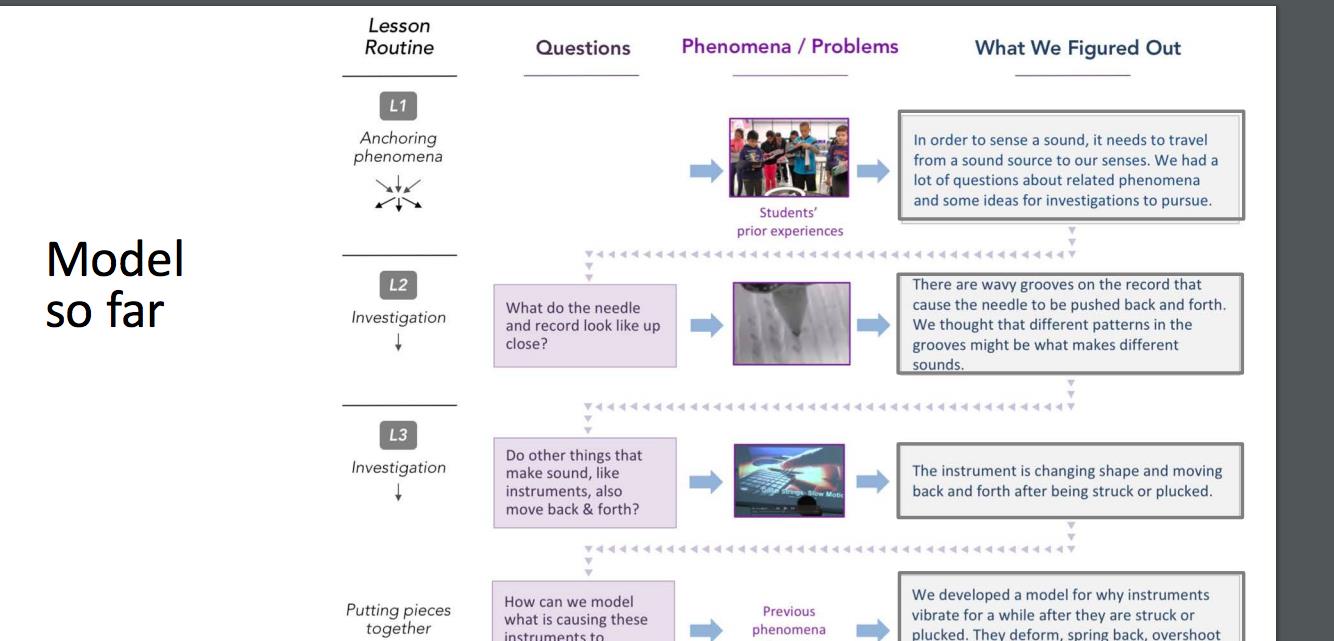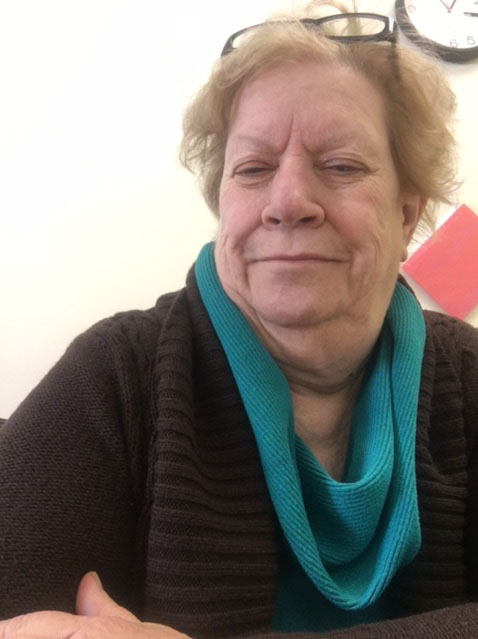Making NGSS Storylines Work
By Cindy Workosky
Posted on 2018-04-24
I had eagerly anticipated a session at the NSTA National Conference in Atlanta called How Do We Make NGSS Storylines Work by Pushing Students to Go Deeper?—presented by Michael Novak and Brian Reiser—and I was not alone: Attendees filled the room to overflowing. I was fortunate to have worked with Novak and Reiser when I was a science coordinator in Vermont, and I was excited to learn more at their session. I was not disappointed. My understanding of how storylines can deepen student understanding of science continues to grow, and this session was valuable because it further enhanced my knowledge.
 Teachers are starving for quality resources, and Novak and Reiser inspired them to write their own 3-D lessons and suggested resources for doing so. They began with the basics of coherent storylines and how they differ from what most of us have always done: In the past, teachers just chose their favorite activities, which didn’t always help students make sense of the concept. Coherent storylines have a certain flow and a purpose for each learning experience.
Teachers are starving for quality resources, and Novak and Reiser inspired them to write their own 3-D lessons and suggested resources for doing so. They began with the basics of coherent storylines and how they differ from what most of us have always done: In the past, teachers just chose their favorite activities, which didn’t always help students make sense of the concept. Coherent storylines have a certain flow and a purpose for each learning experience.
The presenters described an interesting tool that included five questions they use to develop storylines for NGSS learning, and provided examples. I could hear many oohs and ahs around the room, and attendees asking one another questions and reflecting on their instructional approaches and how they could change.
The slide below is my favorite because it shows empathy for the stages where many educators are in their own transition to NGSS and encourages a can-do attitude. (download all the slides here)

Notice that text on the left of the slide states “Model so far.” This language encourages educators to understand that taking a risk is okay: take a risk and try it. It is desirable to use this model and maybe make it even better.
I learned a new word in NGSS science thinking at this session: —problematizing. I believe that when we are problematizing, we are asking students to apply their learning to a new and different situation. By doing so, we give them an opportunity to bolster their understanding and/or ask new questions.
Fellow NGSS Squadsters Liza Rickey and Meg Richards also shared some insights about the session.
Richards had a different view of what problematizing is. It’s determining how to push students to dig deeper, to want to know more.
Rickey was also intrigued by the concept of problematizing and notes that sometimes it’s appropriate to introduce a new phenomenon or question to students who might not have been on driving question board. I agree. Helping students do this might be as simple as asking them for other examples of the phenomenon in their lives, while at other times, teachers might need to introduce a similar situation to help students comprehend the ideas. By doing this, students will think beyond the phenomena themselves and begin to realize why this concept is important beyond the classroom.
After talking with Richards, it was obvious to me that her biggest revelation was the power of student questions. She explained, “I knew wonder drove investigation, but I never thought about it also being the driver of the actual instruction of materials as well (i.e., kids using a microscope). I’m interested in seeing this in action, and even more excited to try it out myself.”
One of my epiphanies is recognizing that yes, students need to know how to use the tools of science to move their learning forward, but that can be accomplished by fostering and eliciting student questions about the tool rather than the teacher providing the answers as had been done in the past.
It’s important to ask questions as we engage in the productive struggle of learning this new way of thinking about science instruction. Novak and Reiser modeled that and invited participants to ask their own questions. Richards had many. The following is a visualization of her questions as a driving question board, with a driving question and many investigable questions that support it.
Her questions
“How can I/we start storylining in our classrooms efficiently and effectively?”
- In having student questions drive investigation, what happens to the questions that aren’t answered?
- How does one ensure students still feel valued?
- What do you do with the disengaged kiddo who “has no questions”?
- How does differentiation work in this model, and what does the grade book (ick!) look like?
- How do you involve and educate parents about the shifting methodology of instruction?
- How can we help students with effective instruction while also preparing them for the current inevitable college instructional strategies?
Do you see it the way I do? Maybe your visualization is different. Please share your thoughts about this.
I want to thank Liza Rickey and Meg Richards for their thoughtful responses to my question.
I have been developing NGSS curriculum for a while now, but Novak’s and Reiser’s work continues to advance my thinking. I now have a few questions of my own. How much time does it take to build storylines this way? How much time during the school day should be allocated for this type of learning?
I welcome your thoughts, ideas, and questions about this topic. Please share in the comment section below.
 Kathy Renfrew is field editor of the Next Gen Navigator. She is a science specialist and instructional coach as well as an NGSS@NSTA curator and online adviser in the NSTA Learning Center. She is a regular science blogger for The Teaching Channel and Middleweb. You can always find her seeking out new learning on Twitter and other social media. Her Twitter handle is @krsciencelady. Kathy previously taught grades 4 through 6 in a self-contained classroom for more than 30 years. She served as a state science supervisor in Vermont for eight years. She is a National Board Certified Teacher and a 2000 recipient of the elementary Presidential Award for Excellence in Science Teaching.
Kathy Renfrew is field editor of the Next Gen Navigator. She is a science specialist and instructional coach as well as an NGSS@NSTA curator and online adviser in the NSTA Learning Center. She is a regular science blogger for The Teaching Channel and Middleweb. You can always find her seeking out new learning on Twitter and other social media. Her Twitter handle is @krsciencelady. Kathy previously taught grades 4 through 6 in a self-contained classroom for more than 30 years. She served as a state science supervisor in Vermont for eight years. She is a National Board Certified Teacher and a 2000 recipient of the elementary Presidential Award for Excellence in Science Teaching.
This article was featured in the April issue of Next Gen Navigator, a monthly e-newsletter from NSTA delivering information, insights, resources, and professional learning opportunities for science educators by science educators on the Next Generation Science Standards and three-dimensional instruction. Click here to read more from the April issue. Click here to sign up to receive the Navigator every month.
Visit NSTA’s NGSS@NSTA Hub for hundreds of vetted classroom resources, professional learning opportunities, publications, ebooks and more; connect with your teacher colleagues on the NGSS listservs (members can sign up here); and join us for discussions around NGSS at an upcoming conference.
The mission of NSTA is to promote excellence and innovation in science teaching and learning for all.
Future NSTA Conferences
2018 STEM Forum & Expo
Dive into Three-Dimensional Instruction Workshop
2018 Area Conferences
2019 National Conference
Follow NSTA
Disclaimer: The views expressed in this blog post are those of the author(s) and do not necessarily reflect the official position of the National Science Teaching Association (NSTA).


